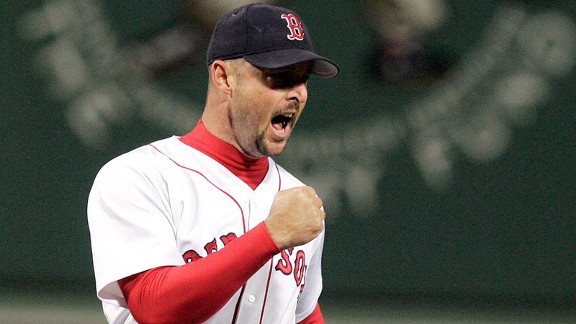It's the last day of civilization, and there are a few things I'd like to get off my chest.
First, let me credit The Verge for this article. There are a lot of doomsday articles out there, but this one allows the voices of the survivalists to come though without too much bluster - they are not voices that I take seriously, but they are interesting voices. Two things that I truly enjoyed: 1) the comments made by Larry Hall at about the 5:30 mark, affirming his belief that climate change is the result of the cyclical movement of our solar system through the Milky Way - the evidence is in the ice core samples, and 2) at 11:50, the walk we take with Edward Peden down a long corrugated steel tube to a doorway with faux stonework, porch lights, and a brass knocker - I'm trying to picture someone using that knocker.
"Hey Edward. It's me. I brought pie."
First, let me credit The Verge for this article. There are a lot of doomsday articles out there, but this one allows the voices of the survivalists to come though without too much bluster - they are not voices that I take seriously, but they are interesting voices. Two things that I truly enjoyed: 1) the comments made by Larry Hall at about the 5:30 mark, affirming his belief that climate change is the result of the cyclical movement of our solar system through the Milky Way - the evidence is in the ice core samples, and 2) at 11:50, the walk we take with Edward Peden down a long corrugated steel tube to a doorway with faux stonework, porch lights, and a brass knocker - I'm trying to picture someone using that knocker.
"Hey Edward. It's me. I brought pie."
Anyway, I've been considering him today. While the Mayans are all gone, this guy is still around, still living with the thought that he was completely wrong about something he sold as a certainty. It's one call you don't want to get wrong; he did not have the foresight to pick a date beyond his lifetime.
At the Museum here in Oakland, we have an installation called Aristotle's Cage by Michael McMillen. Enter a small, dark room through a tattered screen door, and a diorama is presented behind a wire cage: in the foreground is a small trailer with an intense internal light, cars and debris are purposefully stacked into the distance, a far-off tiny town and the mountains beyond glow with the red dawn, and hovering above are the skeletons of a man and a dog. You hear the faint tones of a fuzzy radio.
The Museum provides a single wooden chair in the small viewing space, and when the Museum is quiet, I like to sit there in secret and silent isolation; it's a great place to answer email.
The Museum provides a single wooden chair in the small viewing space, and when the Museum is quiet, I like to sit there in secret and silent isolation; it's a great place to answer email.
I don't think it's ironic that the world should end during the holidays, astronomical and prophetic days. Plus, I guess folks will be in a better mood, so that works out. I like the way music selections that you hear in stores, on TV, and even around the office suddenly shift for Christmas. It's an artificial mood shift delivered on airwaves and PA systems everywhere. I've decided that What Child is this? / Greensleeves by the Vince Guaraldi Trio is the best holiday song ever. I like the solemn melancholy and the thoughtfulness of the show, A Charlie Brown Christmas, and this song seems to sum it up. Digging into the recording's history, we learn that the longer Greensleeves track was an alternate take added to the soundtrack re-release in 1988, which appears to be the version of the album I have. Digging further, we find that the original lyrics for Greensleeves list (possibly) the protestations of a man rejected by a prostitute. Take that Handel.
I'm not familiar either set of words, and that helps me, perhaps, sense the spirit of the song. Maybe that's why I tire so quickly of other Christmas songs. The words are running through my head: flying reindeer, talking snowmen, and fat elves making toys, who have all conflated "holy" with "magical" and have been endowed by their savior Jesus Christ with these incredible holiday super powers. Those are the worst.

.jpg)




